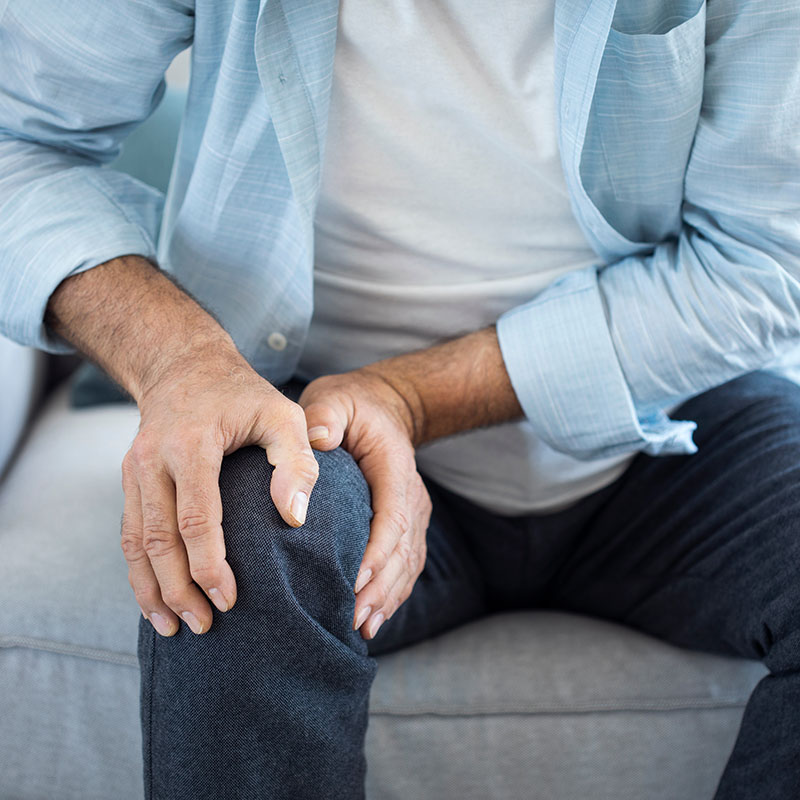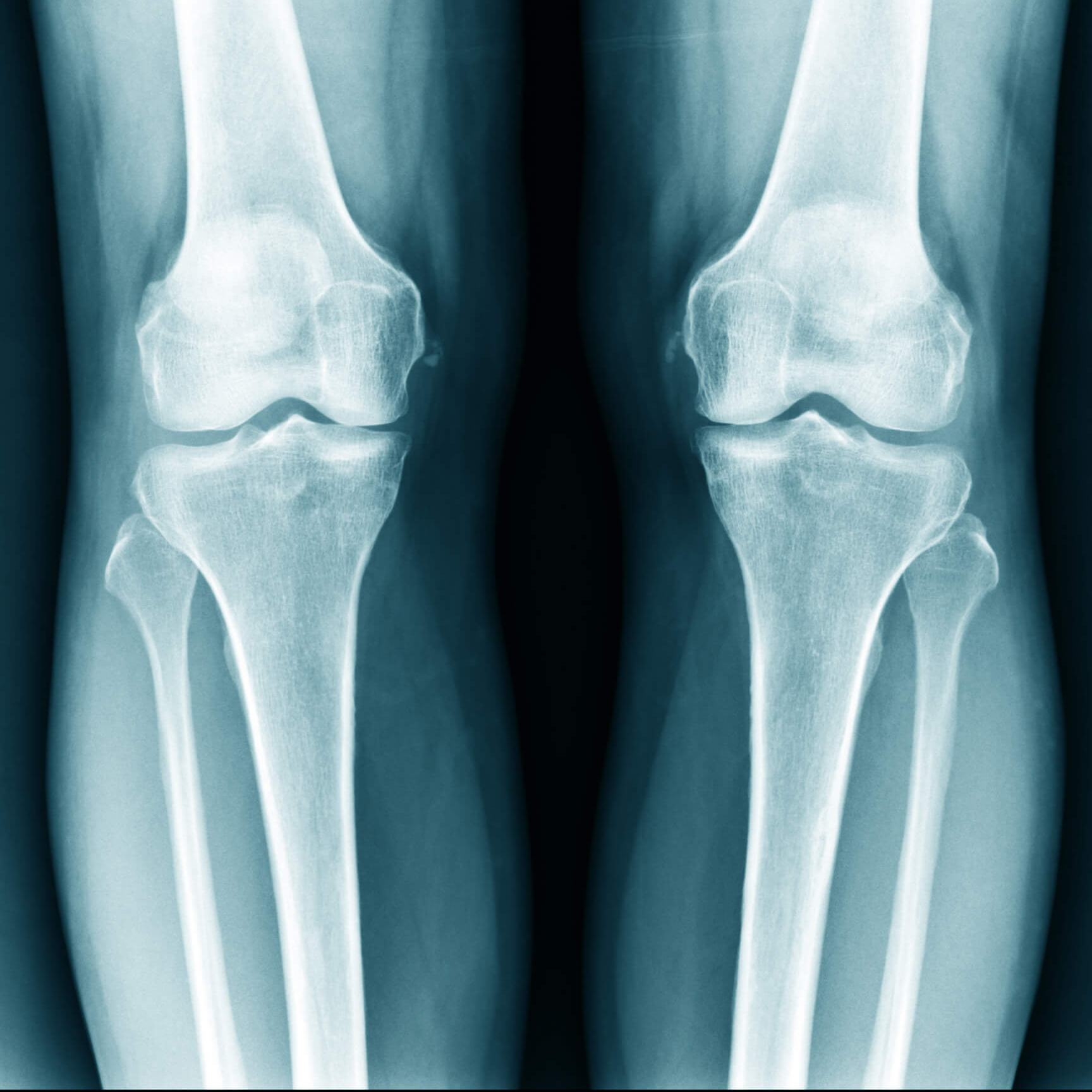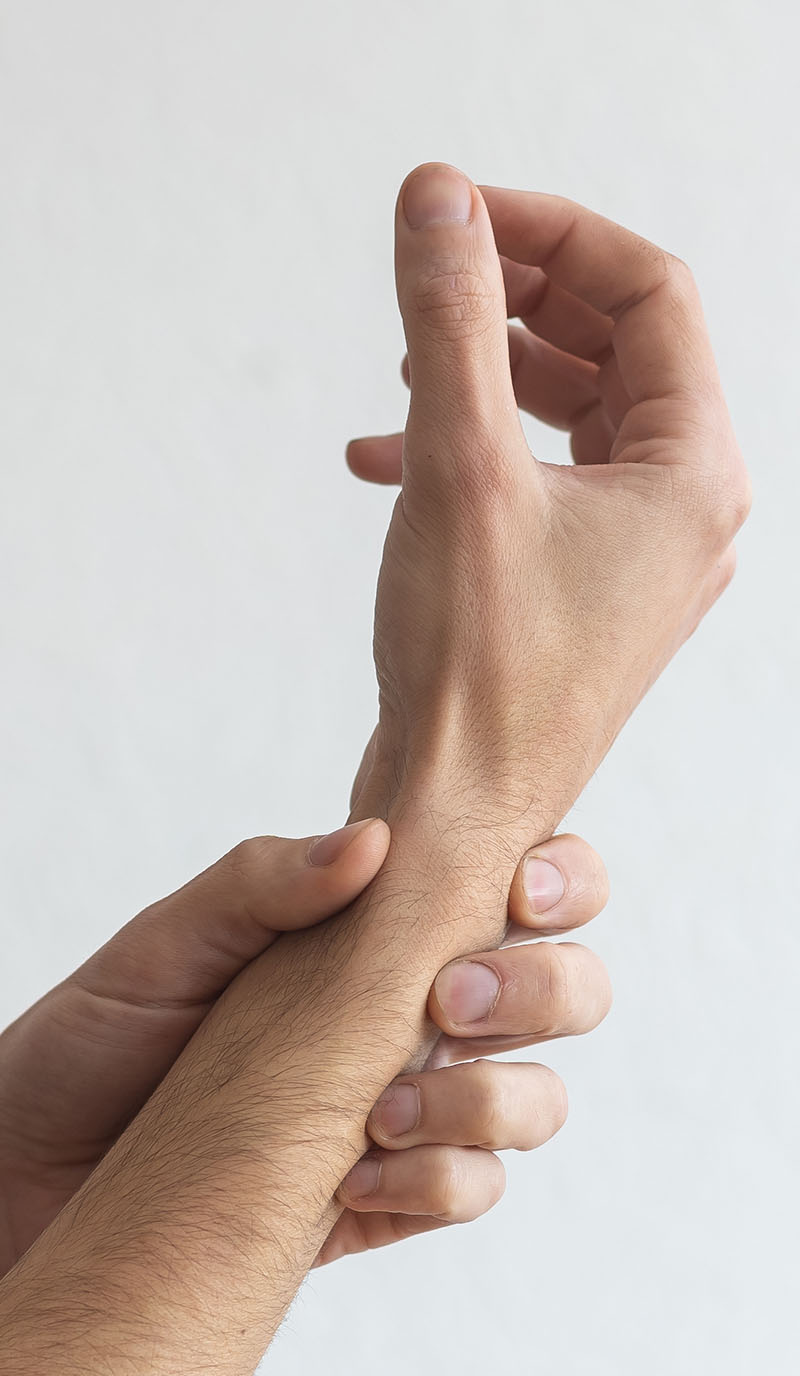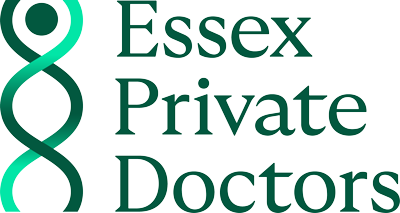BOOK YOUR injection
Joint and Soft Tissue Injections
Joint and Soft Tissue Injections
Joint and Soft Tissue Injections
Are you suffering from a painful and swollen knee, or wear and tear arthritis in a joint?
Joint injections can help reduce pain and swelling and get you back to moving comfortably.
At Essex Private Doctors, we provide joint and soft tissue injections, such as cortisone (steroid) and Ostenil® Plus (hyaluronic acid) injections, for painful joints and soft tissue problems such as tennis elbow, knee osteoarthritis, hip bursitis, and sports injuries.
About Cortisone (Steroid) Injections:
Cortisone (aka hydrocortisone) is a potent anti-inflammatory medication which can be injected directly into a painful joint or soft tissue. It can also be used to treat painful tendons, and bursitis (which is inflammation of a fluid-filled sac on the side of the hip and shoulder joints). The injection reduces pain, inflammation and swelling, and the effects can last for several months.
Steroids are made naturally by the human body, and steroid medication mimics the anti-inflammatory action of naturally occurring steroids. The steroid medications we use in injections (known as corticosteroids) are not the same as anabolic steroids used by body builders.
Steroid injections take a few days to ‘kick in’, and most people begin to experience the benefits after a week or two.
If you have a painful joint, make an appointment to see Dr Henry Grundy-Wheeler, who will assess your condition and examine you. You will be asked questions to ensure that you are suitable for an injection.
Steroid injections are not suitable for people who are pregnant (or are trying to get pregnant), women who are breastfeeding, if a person has any infection in the area of the proposed injection site, if a person has bipolar disorder or mania, or if a person has recently had, or is about to have, a vaccination.
If you’re on a blood thinning medication (such as warfarin or clopidogrel), or if you have a bleeding disorder (such as haemophilia), injection treatment is contraindicated.
If you have diabetes, you may need to monitor your blood sugar more carefully for a few days after the injection, as steroid may cause a temporary change in your blood sugar.
The injection site is then carefully cleaned, and local anaesthetic is carefully injected along with the cortisone. You may be advised to rest from exercise for a few days.
Apart from a little discomfort at the injection site, most people don’t experience side effects after the injection.
Side effects can include a little swelling or bruising at the injection site, a steroid ‘flare’ (which is when the steroid medication temporarily irritates the injection site before it begins to action), infection (which is very rare), and occasionally temporary menstrual disturbance.
Sometimes there can be slight thinning or change in the colour of the skin overlying the injection site, but this usually corrects after a few weeks.
Some people worry about potentially gaining weight after a steroid injection, but this is highly unlikely after a one-off treatment.


About Ostenil® Plus (Hyaluronic Acid) Injections:
Joint pain caused by wear and tear, such as osteoarthritis, can significantly affect your ability to enjoy daily activities. While steroid injections have traditionally been used to manage this pain, they can sometimes cause more harm than good, particularly with repeated use. Ostenil® Plus offers a modern, safe, and highly effective alternative that not only relieves pain but also supports long-term joint health.
Osteoarthritis, a common form of joint wear and tear, is often caused by the gradual reduction of synovial fluid within the joint. Synovial fluid is a viscoelastic substance that provides essential lubrication, absorbs shock, and protects the cartilage. Without adequate synovial fluid, the joint becomes stiff, painful, and prone to further damage.
Ostenil® Plus is specifically designed to address this problem by replenishing and improving the quality of synovial fluid, helping to restore your joint’s natural function.
Ostenil® Plus is a hyaluronic acid-based injection enhanced with a mannitol stabiliser, which increases its durability and effectiveness compared to standard hyaluronic acid treatments. Its advanced formula offers the following key benefits:
- Replenishes Synovial Fluid: Ostenil® Plus replaces the depleted synovial fluid, restoring its natural viscoelastic properties.
- Improves Joint Mechanics: By reducing friction and enhancing shock absorption, it alleviates the mechanical overload that can cause pain.
- Provides Long-Lasting Relief: Clinical trials show that Ostenil® Plus can offer pain relief and improved mobility for up to 9 to 12 months after a course of treatment.
Steroid injections have long been used to manage joint pain, and they can be very useful in reducing inflammation. Repeated use of steroids, however, can lead to significant drawbacks, including:
- Cartilage Degradation: Excessive steroid use can break down the cartilage in the joint, accelerating the progression of osteoarthritis rather than slowing it.
- Systemic Absorption: Steroids can enter the bloodstream, potentially affecting other organs and systems. For some patients, this can lead to unwanted side effects, particularly with repeated doses.
- Short-Term Effects: While steroids may provide temporary pain relief, they don’t restore the synovial fluid or improve the joint’s mechanics, meaning their benefits are often limited in duration.
By contrast, Ostenil® Plus works by addressing the root cause of joint pain—the loss of synovial fluid. It does not degrade cartilage, carries minimal risk of systemic side effects, and promotes long-term joint health by improving the joint’s natural shock-absorbing and lubricating capabilities.
Ostenil® Plus mimics and enhances the properties of natural synovial fluid. Hyaluronic acid, a major component of healthy synovial fluid, is injected directly into the joint, where it:
- Lubricates the Joint: Reduces friction during movement, allowing for smoother and more comfortable mobility.
- Absorbs Shock: Improves the joint’s ability to absorb impact, reducing the strain caused by everyday activities.
- Reduces Pain: By restoring the joint’s natural mechanics, Ostenil® Plus alleviates pain without the risks associated with steroids.
Ostenil® Plus is administered as a 2 ml injection, typically into large weight-bearing joints like the knee. Treatment schedules are flexible, often involving one to three injections over six weeks, with a two-week interval between injections.
Expected Outcomes:
- Significant pain reduction and mobility improvements are often noticeable within six weeks of starting treatment.
- Results last for up to 9 to 12 months, offering a long-lasting solution to joint pain.
- Clinical data shows a marked improvement in overall joint function, allowing patients to return to activities they enjoy.
Ostenil® Plus has a well-established safety profile. Unlike steroids, it does not pose a risk of cartilage damage or systemic side effects. Fewer than 4% of patients experience minor reactions, such as temporary discomfort at the injection site. For the vast majority of individuals, Ostenil® Plus is a safe and effective way to manage joint pain.
Ostenil® Plus is ideal for patients with osteoarthritis or joint pain who want a treatment that provides lasting relief without the drawbacks of steroids. It’s particularly suitable for:
- Patients who wish to avoid or delay surgical interventions like joint replacement.
- Younger or active individuals seeking a non-steroidal solution to preserve long-term joint health.
- Those with large weight-bearing joint issues, especially in the knee.
(Ostenil® Plus can also be used in other joints, such as the shoulder or hip, though hip injections typically require ultrasound guidance).
We commonly treat:
Knee osteoarthritis can be painful and debilitating. If you’re suffering from pain or swelling, or are struggling to walk or sleep comfortably, we can help.
Shoulder pain can be a misery – interrupting your sleep, and even making it difficult to put on clothes.
We can use corticosteroid injections to treat rotator cuff tendinopathy, subacromial bursitis, acromioclavicular (ACJ) joint pain, and frozen shoulder.
If you have tennis elbow and it’s not responding to physio, or is interfering in your daily life and work, injection treatment can get you back on track.
Golfer’s elbow is pain on the side of the elbow that can bring on pain when picking up a heavy weight, or even carrying a child.
Also known as prepatella bursitis, or ‘house maid’s knee, knee bursitis is a swelling on the front of the knee that comes on when an activity or occupation has required a lot of kneeling onto the knee. It can sometimes cause a very large swelling, which can restrict knee bending. Injection treatment can ‘switch off’ the inflammation, and settle the swelling.
Olecranon or elbow bursitis, is a painful swelling at the point of the elbow, which can sometimes become quite sizable. It occurs if there has been trauma to the elbow, or more commonly because of regular leaning on the elbow.
De Quervain’s Tenosynovitis is a painful condition affecting the tendons on the thumb side of the wrist. It’s very common in women who are nursing young babies, and it can cause a lump and even a creaking sensation on the side of the wrist.
If you’ve been suffering with joint pain, arthritis, or a soft-tissue condition, book an appointment today, and let’s get you back to being active.


